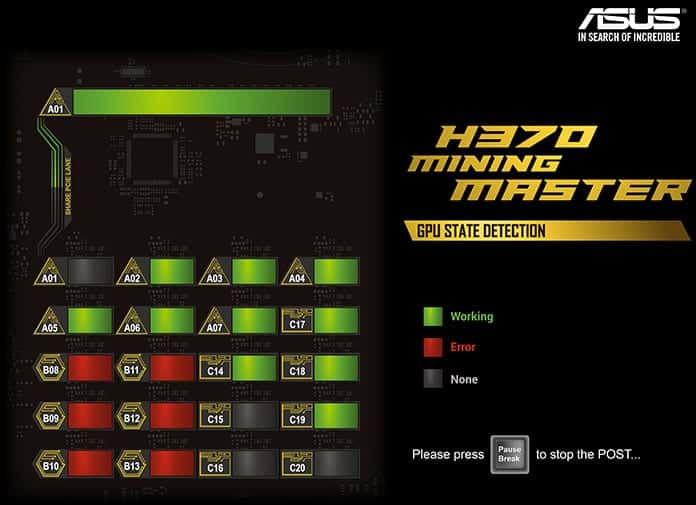Called as the ASUS H370 Mining Master motherboard, the device enables the users to effectively power an entire mining farm with one single board. The ASUS H370, which is a follow up to the B250 Mining Expert launched in September last year, also supports streamlined connectivity by allowing USB riser cables to plug directly into the PCB (Printed Circuit Board) to simplify connectivity. According to the company, it will be easier to identify problems with the motherboard reducing the downtime and ensure fewer PCIe (Peripheral Component Interconnect Express) disconnects. The H370 mining motherboard is so focused on optimizing crypto-mining that ASUS has made mining-specific tweaks, with one of them being the GPU state detection before the board boots, which identifies the location and status of each port and allocates alphanumeric codes for easy identification.
Let’s have a look at the full specifications of the motherboard in a glance: Size: ATX, 12″x9.1″ Socket: LGA 1151 for Intel 8th Gen Core / Pentium / Celeron processors Memory: 2 x DIMMs (max. 32GB), DDR4 2666 / 2400 / 2133 MHz , Non-ECC, unbuffered memory PCIe: 1 x PCIe x16 slot Storage: 2 x Serial ATA 6.0 Gb/s connectors Networking: 1 x Intel Gigabit LAN USB GPU Riser Ports: 20 x Vertical USB ports over PCIe USB Ports: 6 x USB 3.1 Gen 1, 4 x USB 2.0 / 1.1 ports Other Ports: 1 x COM header The ASUS H370 Mining Master motherboard is expected to be available initially in the North American countries between July to September this year. However, there is no word on pricing from ASUS on the H370 yet.
